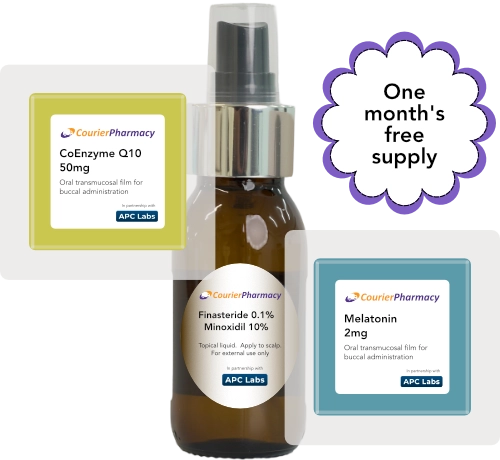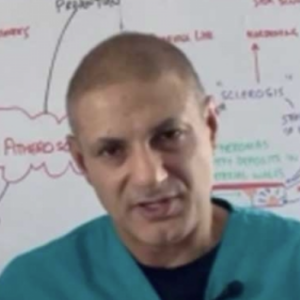Are you facing long COVID and its lingering symptoms? Millions still experience tiredness, brain fog, and muscle pain long after their initial COVID-19 infection. Can LDN help with long COVID?
One treatment option gaining popularity is low-dose naltrexone (LDN).
This guide explains how LDN works, its role in reducing inflammation, and how it supports your immune system to ease long COVID symptoms.
Table of contents
- LDN, a promising treatment for long COVID
- Understanding Long COVID
- Causes of long COVID
- LDN as a treatment option
- What is low-dose naltrexone?
- The two forms of naltrexone: Chirality
- How does low-dose naltrexone work?
- Long COVID and similarities with chronic fatigue syndrome
- Who can benefit from LDN?
- Summary of long COVID and LDN
- Where can I buy LDN online in the UK?
- Personalised medicines with APC Labs compounding
-
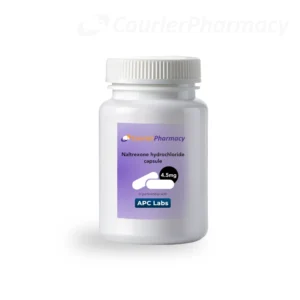 Low Dose Naltrexone 4.5mg capsules£29.99 – £82.99
Low Dose Naltrexone 4.5mg capsules£29.99 – £82.99 -
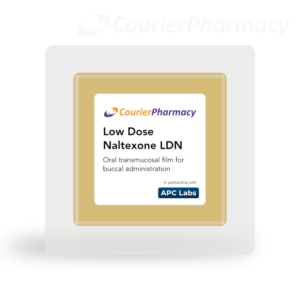 Low Dose Naltrexone 4.5mg Soluble Oral Patch£39.99 – £124.99
Low Dose Naltrexone 4.5mg Soluble Oral Patch£39.99 – £124.99
LDN, a promising treatment for long COVID
Low-dose naltrexone (LDN) is showing potential in relieving long COVID symptoms such as fatigue, cognitive issues, and sleep disturbances [1], [3]. Although further research is needed, several studies and anecdotal reports indicate that LDN might benefit some individuals dealing with long COVID.
Research evidence supporting LDN
- A small study reported that LDN helped improve self-reported symptoms like pain and energy levels in long COVID patients [1].
- In one single-center study, 52 patients treated with LDN experienced overall improvements in daily activities, energy, pain, concentration, and sleep quality [2].
- A retrospective study found that 62.7% of patients on LDN noted an improvement in at least one symptom [2].
Understanding Long COVID
Many individuals continue to have symptoms even after the COVID-19 infection has cleared [4].
Long COVID lasts for at least three months and can show up as continuous, recurring, or even worsening symptoms that affect the entire body [4].
Common issues include:
- Fatigue
- Brain fog
- Shortness of breath
- Other health concerns [4]
Prevalence of long COVID
Long COVID affects approximately 10% to 30% of those infected with COVID-19. It can impact anyone—even those who had only mild or no symptoms initially—but it is more common in seriously ill people [5].
The condition may also worsen existing health problems and disrupt daily life, increasing the pressure on healthcare systems worldwide.
Long COVID and cognitive challenges
A significant aspect of long COVID is cognitive impairment, often known as “brain fog” [6].
Research shows:
- Up to 30% of patients struggle with clear thinking
- Nearly 46% report memory problems [6]
These cognitive issues may last for months or even years, underlining the need for long-term care and specialised treatments.
Causes of long COVID
Experts believe long-term COVID is caused by several factors that act together [6]. These include:
- An overactive immune system
- Problems with the cell’s energy producers (mitochondria)
- Blood vessel damage
- Ongoing inflammation
- Autoimmune responses
- Lingering virus particles
- Nervous system complications
- Imbalances in the body’s microbes
Prolonged activation of the immune system
A significant issue in long COVID is the prolonged activation of the immune system. This can prevent the body from returning to its normal state by:
- Keeping the innate immune system (the body’s first line of defense) continuously active
- Exhausting T cells, which are part of the adaptive immune system
- Maintaining high levels of interferons, the chemical messengers that alert the immune system [7]
Mitochondrial issues and long COVID
Problems with mitochondria, which may be triggered by dormant viruses like Epstein-Barr, can result in low energy levels, chronic fatigue, and difficulties with exercise [8].
Blood vessel damage
Damage to blood vessels can lead to the formation of small clots and poor oxygen delivery, raising the risk of heart and vascular issues, such as deep vein clots and lung clots [9].
LDN as a treatment option
Several studies have shown that low-dose naltrexone (LDN) can help reduce long COVID symptoms, particularly fatigue, post-exertional malaise, and pain [10]. For example:
- A study involving 38 long COVID patients reported that over two months, many experienced reduced pain, improved mood, and less joint and chest discomfort [11].
- In another study of 59 patients, those taking LDN noted fewer symptoms, improving fatigue, post-exertional malaise, and sleep quality. Notably, the duration of symptoms (whether less or more than a year) did not affect LDN’s effectiveness [10].
What is low-dose naltrexone?
Naltrexone is a drug best known for blocking opioids. However, it works differently when taken in much smaller doses than the standard 50mg.
Low-dose naltrexone (LDN) is usually prescribed at 1 to 4.5 mg per day. At this level, it helps lower inflammation in the brain by influencing specific immune signals and temporarily boosting the body’s natural opioid system.
Some studies suggest that LDN may be helpful for conditions such as fibromyalgia, Crohn’s disease, multiple sclerosis, complex regional pain syndrome, long COVID, and even cancer [12].
-
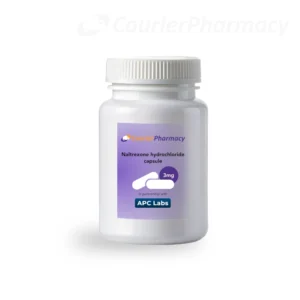 Low Dose Naltrexone 3mg capsules£27.99 – £79.99
Low Dose Naltrexone 3mg capsules£27.99 – £79.99 -
 Low Dose Naltrexone 4.5mg capsules£29.99 – £82.99
Low Dose Naltrexone 4.5mg capsules£29.99 – £82.99
The two forms of naltrexone: Chirality
Naltrexone has a unique property called chirality. This means the drug exists in two mirror-image forms—similar to having a left and right hand that are alike yet not identical.
Many drugs, like levothyroxine and levocetirizine, hint at this property in their names. Typically, only one form is active, while the other may cause side effects [13]. In the case of naltrexone, however, both the levo (left) and dextro (right) forms offer positive effects.
Effects of dextro-naltrexone
The dextro form targets toll-like receptors (TLRs) found on immune cells such as microglia, mast cells, and macrophages. By blocking these receptors, dextro-naltrexone helps reduce the production of inflammatory substances and stops the chain reaction of inflammation.
Effects of levo-naltrexone
The levo form works on opiate receptors, which are normally used by natural endorphins. It temporarily blocks these receptors, prompting the body to produce more anti-inflammatory endorphins and increasing the number of opiate receptors. This form also directly influences cell growth.
How does low-dose naltrexone work?
LDN has been used for several years to treat a range of conditions. It works by targeting the disease directly and altering how the immune system functions. Because many health issues are linked to immune system problems, LDN is becoming a popular treatment choice. It is even being considered as a potential option for easing long COVID symptoms, with sound scientific reasoning behind its use.
LDN as an anti-inflammatory
Low-dose naltrexone (LDN) is well-known for its anti-inflammatory properties. Research in the lab has shown that LDN can change how certain immune cells behave, reducing the release of cytokines—chemical messengers that help activate the immune system.
Reduction in cytokine levels
In studies with patients using LDN, significant drops in key cytokines were observed after eight weeks. These cytokines include:
- G-CSF
- IL-4
- IL-6
- IL-10
- IFN-alpha
- TNF-beta
This decrease supports the idea that LDN can help regulate the immune system.
Recent research also shows that LDN affects the TLR-9 pathway, lowering IL-6 levels—a critical driver of inflammation, especially in COVID cases.
Opioids and the immune system
While the exact way naltrexone changes cytokine levels is not fully understood, it is known that opioids such as morphine can weaken the immune system. This is because immune cells have opioid receptors that help regulate the body’s defense mechanisms.
Long COVID and similarities with chronic fatigue syndrome
LDN is already recognised as a beneficial treatment for Myalgic Encephalomyelitis/Chronic Fatigue Syndrome (ME/CFS) and fibromyalgia, conditions that share several symptoms with long COVID.
Research indicates a significant overlap between ME/CFS and PASC (post-acute sequelae of COVID) symptoms [14]. For example, in a group of 140 patients with PASC, 46% met the criteria for ME/CFS [15].
Who can benefit from LDN?
Since long COVID symptoms can vary widely, LDN may be most beneficial for those with issues similar to chronic fatigue syndrome. These symptoms include:
- Severe fatigue
- Unrefreshing sleep
- Cognitive difficulties
- Problems with standing
Studies in non-COVID ME/CFS patients have shown that nearly 74% experienced benefits with LDN treatment [16]. Many of these patients felt more alert, with improvements in both physical and mental performance, and some reported less pain and fever without any serious side effects or long-term issues.
Summary of long COVID and LDN
Low-dose naltrexone (LDN) is linked to reduced overall symptoms, including improvements in fatigue, post-exertional malaise, unrefreshing sleep, and abnormal sleep patterns.
It works by modulating the immune system by acting on receptors called toll-like receptors. It also causes the upregulation of the body’s natural painkillers, the endorphins.
Understanding why long COVID occurs can help you better navigate your long COVID journey and explain why LDN may offer a potential benefit.
Where can I buy LDN online in the UK?
You can purchase low-dose naltrexone or LDN after completing an online health questionnaire. Once you have purchased your LDN, you will be entitled to FREE follow-up consultations with one of our prescribers to help you on your journey to recovery.
This broad coverage ensures that no matter your specific health need, you can find a solution that fits.
If you don’t find what you need, please get in touch with us, and we can help find a solution for you.
Personalised medicines with APC Labs compounding
Courier Pharmacy is proud to announce our partnership with the compounding pharmacy, APC Labs. This collaboration allows us to create personalised medications specially tailored to your needs. By working with experienced compounding pharmacists, Courier Pharmacy can now fully bespoke medicines crafted to suit your unique health requirements.
Compounded low-dose nalterxone or LDN
We now offer a full range of low-dose naltrexone or LDN for long COVID, fibromyalgia and other autoimmune conditions.
Complete the online health questionnaire and order the LDN formulation that suits you. We currently supply LDN as:
With every order, there is a FREE LDN consultation.
-
 Low Dose Naltrexone 4.5mg capsules£29.99 – £82.99
Low Dose Naltrexone 4.5mg capsules£29.99 – £82.99 -
 Low Dose Naltrexone 4.5mg Soluble Oral Patch£39.99 – £124.99
Low Dose Naltrexone 4.5mg Soluble Oral Patch£39.99 – £124.99
References:
- ME Association. (2023, June). Low-Dose Naltrexone Could Treat Long COVID Symptoms.
- Naik, H., Cooke, E., Boulter, T., Dyer, R., Bone, J.N., Tsai, M., Cristobal, J., McKay, R.J., Song, X. and Nacul, L., 2024. Low-dose naltrexone for post-COVID fatigue syndrome: A study protocol for a double-blind, randomised trial in British Columbia. BMJ open, 14(5), p.e085272.
- Dietz, T.K. and Brondstater, K.N., 2024. Long COVID management: A mini review of current recommendations and underutilized modalities. Frontiers in Medicine, 11, p.1430444.
- Ely, E.W., Brown, L.M. and Fineberg, H.V., 2024. Long covid defined. New England Journal of Medicine, 391(18), pp.1746-1753.
- Fesharaki-Zadeh, A., Lowe, N. and Arnsten, A.F., 2023. Clinical experience with the ?2A-adrenoceptor agonist, guanfacine, and N-acetylcysteine for the treatment of cognitive deficits in “Long-COVID19”. Neuroimmunology Reports, 3, p.100154.
- Dietz, T.K. and Brondstater, K.N., 2024. Long COVID management: a mini review of current recommendations and underutilized modalities. Frontiers in Medicine, 11, p.1430444.
- Phetsouphanh, C., Darley, D.R., Wilson, D.B., Howe, A., Munier, C., Patel, S.K., Juno, J.A., Burrell, L.M., Kent, S.J., Dore, G.J. and Kelleher, A.D., 2022. Immunological dysfunction persists for 8 months following initial mild-to-moderate SARS-CoV-2 infection. Nature immunology, 23(2), pp.210-216.https://www.nature.com/articles/s41590-021-01113-x
- Guntur, V.P., Nemkov, T., de Boer, E., Mohning, M.P., Baraghoshi, D., Cendali, F.I., San-Millán, I., Petrache, I. and D’Alessandro, A., 2022. Signatures of mitochondrial dysfunction and impaired fatty acid metabolism in plasma of patients with post-acute sequelae of COVID-19 (PASC). Metabolites, 12(11), p.1026.
- Charfeddine, S., Ibn Hadj Amor, H., Jdidi, J., Torjmen, S., Kraiem, S., Hammami, R., Bahloul, A., Kallel, N., Moussa, N., Touil, I. and Ghrab, A., 2021. Long COVID 19 syndrome: is it related to microcirculation and endothelial dysfunction? Insights from TUN-EndCOV study. Frontiers in cardiovascular medicine, 8, p.745758.
- Bonilla, H., Tian, L., Marconi, V.C., Shafer, R., McComsey, G.A., Miglis, M., Yang, P., Bonilla, A., Eggert, L. and Geng, L.N., 2023. Low-dose Naltrexone use for the management of post-acute sequelae of COVID-19. International immunopharmacology, 124, p.110966.
- O’Kelly, B., Vidal, L., McHugh, T., Woo, J., Avramovic, G. and Lambert, J.S., 2022. Safety and efficacy of low dose naltrexone in a long covid cohort; an interventional pre-post study. Brain, Behavior, & Immunity-Health, 24, p.100485.
- Toljan, K. and Vrooman, B., 2018. Low-dose naltrexone (LDN)—review of therapeutic utilization. Medical Sciences, 6(4), p.82.
- Nguyen LA, He H, Pham-Huy C. Chiral drugs: an overview. Int J Biomed Sci. 2006 Jun;2(2):85-100.
- Chen, C., Haupert, S.R., Zimmermann, L., Shi, X., Fritsche, L.G. and Mukherjee, B., 2022. Global prevalence of post-coronavirus disease 2019 (COVID-19) condition or long COVID: a meta-analysis and systematic review. The Journal of infectious diseases, 226(9), pp.1593-1607.
- Bonilla, H., Quach, T.C., Tiwari, A., Bonilla, A.E., Miglis, M., Yang, P.C., Eggert, L.E., Sharifi, H., Horomanski, A., Subramanian, A. and Smirnoff, L., 2023. Myalgic Encephalomyelitis/Chronic Fatigue Syndrome is common in post-acute sequelae of SARS-CoV-2 infection (PASC): Results from a post-COVID-19 multidisciplinary clinic. Frontiers in neurology, 14, p.1090747.
- Polo, O., Pesonen, P. and Tuominen, E., 2019. Low-dose naltrexone in the treatment of myalgic encephalomyelitis/chronic fatigue syndrome (ME/CFS). Fatigue: Biomedicine, health & behavior, 7(4), pp.207-217.
Are weight loss treatments making you tired, or have they led to a sudden increase in hair loss? Do you struggle with sleep?
Get a free month’s supply of one of our compounded treatments for energy, hair loss or sleep, with your first purchase of Mounjaro or Wegovy from Courier Pharmacy.
Claim your FREE offer